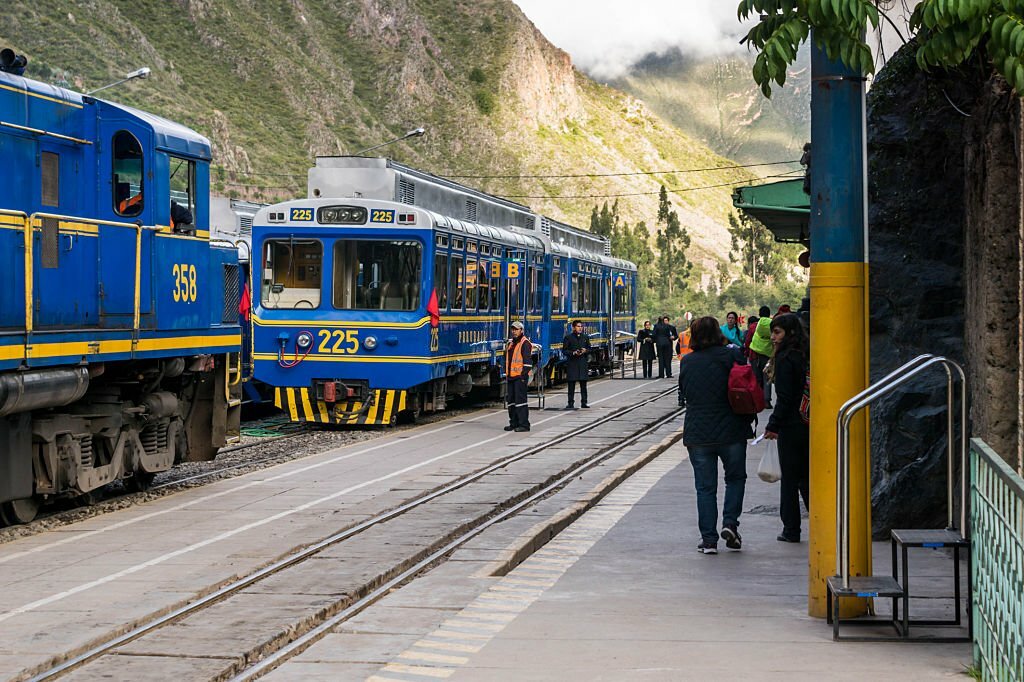Nestled in the heart of the Sacred Valley of the Incas, Ollantaytambo Station serves as a bustling gateway for travelers embarking on a remarkable journey to the ancient Inca citadel of Machu Picchu. Beyond its role as a transportation hub, Ollantaytambo Station itself is a destination steeped in history, surrounded by Inca ruins, picturesque landscapes, and the vibrant culture of the Andean highlands.
1. Historical Significance:
Ollantaytambo is more than just a train station; it is a living testament to the architectural prowess of the Inca civilization. The town itself is dotted with well-preserved Inca ruins, including imposing terraces, ceremonial platforms, and intricate stone structures. Ollantaytambo Station sits in the shadow of the formidable Ollantaytambo archaeological site, inviting visitors to explore the rich history of this once-thriving Inca settlement.
2. Strategic Location:
The strategic location of Ollantaytambo Station makes it a crucial transportation hub for those journeying to Machu Picchu. Situated at a lower altitude than Cusco, Ollantaytambo provides a starting point for the train journey to Aguas Calientes, the gateway to Machu Picchu. The train ride from Ollantaytambo offers breathtaking views of the Sacred Valley and the Andean landscape.
3. Train Connections:
Ollantaytambo Station is well-connected to major train services that transport visitors to Machu Picchu. The train journey from Ollantaytambo to Aguas Calientes is a scenic adventure, passing through lush valleys, along the Urubamba River, and beneath towering peaks. Travelers can choose from different train classes, each offering a unique experience, from panoramic windows to luxurious amenities.
4. Charming Town Atmosphere:
Surrounding the station is the charming town of Ollantaytambo, characterized by cobblestone streets, colonial architecture, and a vibrant market. The town’s plaza is a lively gathering place where locals and visitors converge, creating a welcoming atmosphere filled with the sounds of traditional music, colorful textiles, and the aroma of Andean cuisine.
5. Ollantaytambo Ruins:
The Ollantaytambo archaeological site, overlooking the town and station, is a must-visit for history enthusiasts. The site features a massive fortress with finely crafted stone walls, temples, and agricultural terraces. The intricate stonework and the strategic layout of the site provide insights into the Inca’s advanced engineering and military planning.
6. Living Inca Heritage:
Ollantaytambo is not merely a relic of the past; it is a living testament to Inca heritage. The town’s inhabitants, many of whom are direct descendants of the Inca, continue traditional practices such as textile weaving and agricultural methods passed down through generations. Visitors have the opportunity to engage with the local community and gain a deeper understanding of Andean culture.
7. Market Delights:
The market in Ollantaytambo is a vibrant kaleidoscope of colors and textures. Local artisans showcase their craftsmanship, offering handmade textiles, ceramics, and traditional Andean products. Exploring the market is a sensory delight, providing a glimpse into the cultural richness of the region.
8. Preservation Efforts:
Recognizing the historical and cultural significance of Ollantaytambo, preservation efforts are underway to safeguard the town and its archaeological treasures. Conservation initiatives focus on maintaining the integrity of the ruins, managing tourism impact, and ensuring that Ollantaytambo continues to be a sustainable and authentic destination.
In conclusion, Ollantaytambo Station is not just a transit point; it is a gateway to a multi-faceted experience that encompasses history, culture, and natural beauty. From the train journey through the Sacred Valley to the exploration of Inca ruins and the vibrant atmosphere of the town, Ollantaytambo Station invites travelers to embark on a captivating adventure that goes beyond the mere passage to Machu Picchu.
Book your ticket here.










Comment (0)